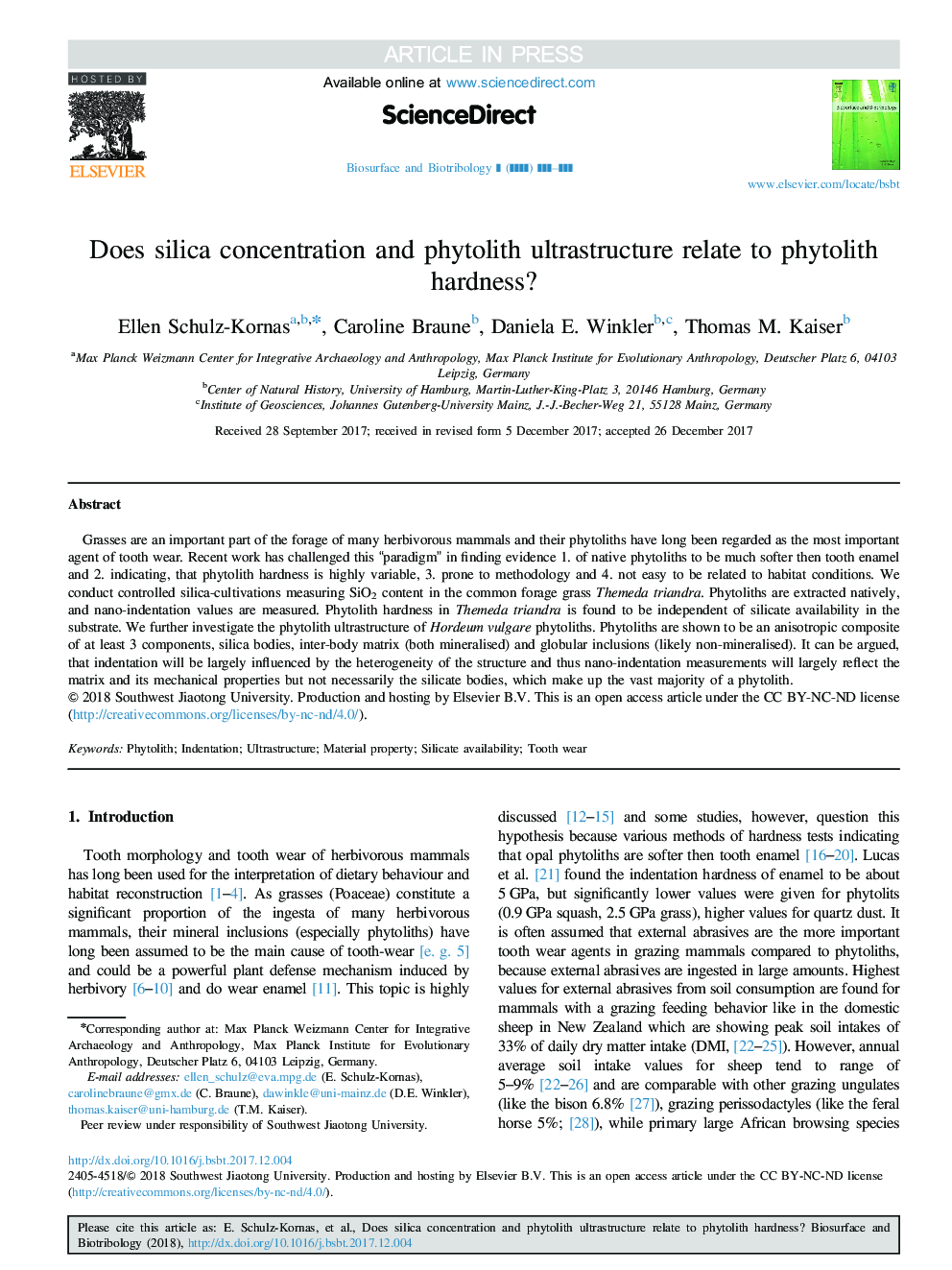| Article ID | Journal | Published Year | Pages | File Type |
|---|---|---|---|---|
| 7153045 | Biosurface and Biotribology | 2017 | 9 Pages |
Abstract
Grasses are an important part of the forage of many herbivorous mammals and their phytoliths have long been regarded as the most important agent of tooth wear. Recent work has challenged this “paradigm” in finding evidence 1. of native phytoliths to be much softer then tooth enamel and 2. indicating, that phytolith hardness is highly variable, 3. prone to methodology and 4. not easy to be related to habitat conditions. We conduct controlled silica-cultivations measuring SiO2 content in the common forage grass Themeda triandra. Phytoliths are extracted natively, and nano-indentation values are measured. Phytolith hardness in Themeda triandra is found to be independent of silicate availability in the substrate. We further investigate the phytolith ultrastructure of Hordeum vulgare phytoliths. Phytoliths are shown to be an anisotropic composite of at least 3 components, silica bodies, inter-body matrix (both mineralised) and globular inclusions (likely non-mineralised). It can be argued, that indentation will be largely influenced by the heterogeneity of the structure and thus nano-indentation measurements will largely reflect the matrix and its mechanical properties but not necessarily the silicate bodies, which make up the vast majority of a phytolith.
Related Topics
Physical Sciences and Engineering
Engineering
Mechanical Engineering
Authors
Ellen Schulz-Kornas, Caroline Braune, Daniela E. Winkler, Thomas M. Kaiser,
